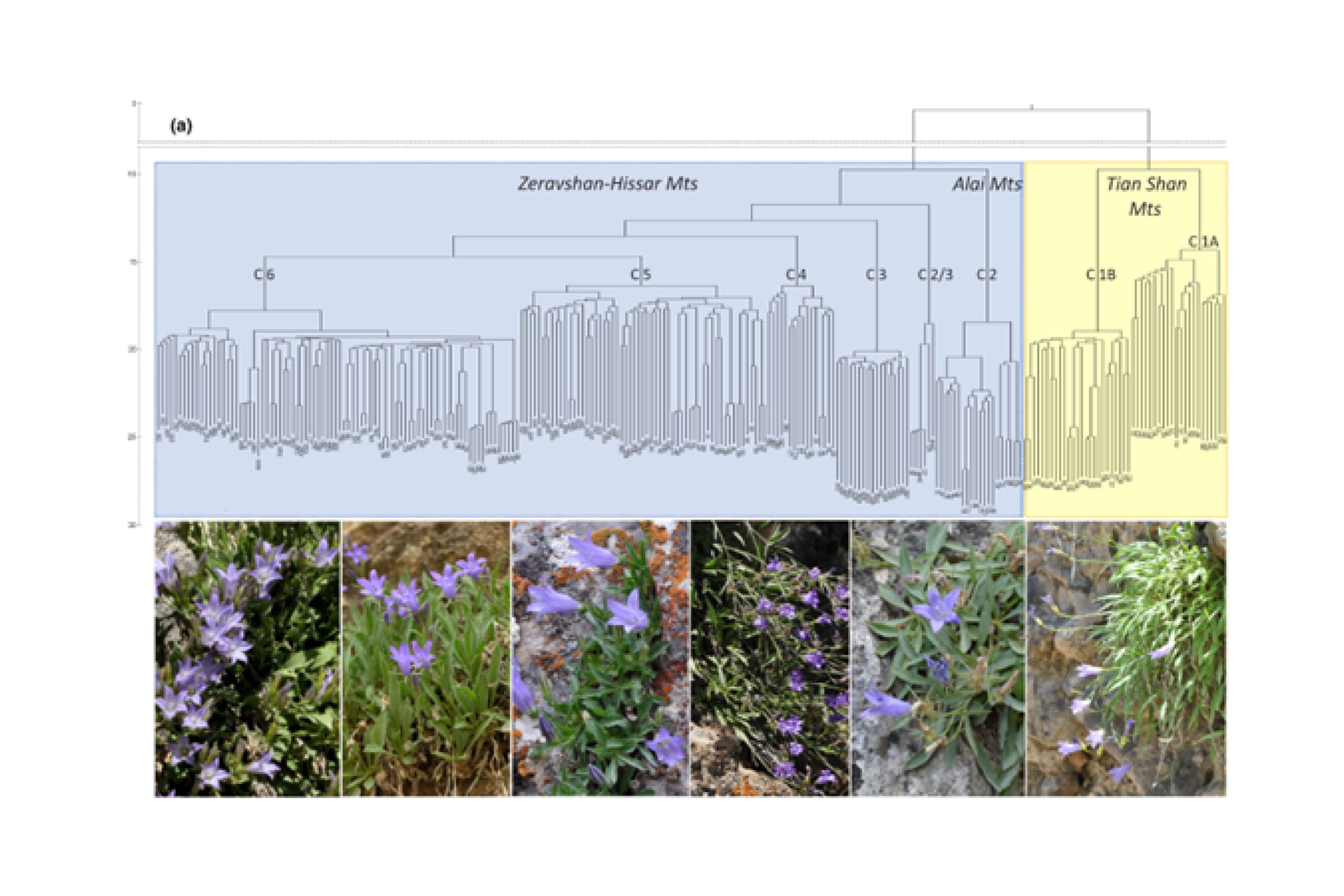Oscylacje klimatyczne w przeszłości były główną siłą napędową zmian radiacyjnych gatunków alpejskich. Poznanie reakcji gatunków na oscylacje paleoklimatyczne ma kluczowe znaczenie w prognozowaniu ich przyszłości w obliczu ocieplenia klimatu. Celem badań, które zostały przeprowadzone przez zespół badaczy flory i roślinności Środkowej Azji z Uniwersytetu Jagiellońskiego i PAN OB – CZRB było zbadanie wpływu wahań klimatycznych na historię ewolucji, demografię i rozmieszczenie dzwonków wysokogórskich z kompleksu Campanula lehmanniana.

Abstract
Past climatic oscillations are the main driving force of evolutionary changes in alpine species. Species’ response to paleoclimatic oscillations is crucial in forecasting their future response in face of climate warming. The aim of this research is to explore the effect of climatic fluctuations on the evolutionary history, demography, and distribution of high-mountain bellflowers (Campanula lehmanniana complex), the flagship and taxonomically problematic members of chasmophytic vegetation within an underexplored biodiversity hotspot, the Mountains of Central Asia. Central Asia (Tian Shan, Alai and Zeravshan-Hissar Mountains). We used molecular data (ITS, cpDNA, DArTseq-based SNPs) of 262 individuals (70 for the phylogeny reconstruction, and 247 from 31 localities for population studies). We analysed the data using phylogenetic and molecular clock reconstructions, coalescent simulations, and ecological niche modelling. Tertiary isolation between the Tian-Shanian and Pamir-Alaian populations led to the differentiation of the two main lineages (~5–6 Mya) corresponding to C. eugeniae and C. lehmanniana, whereas further Quaternary isolation into subregions led to intraspecific genetic differentiation, which starts almost simultaneously for both species (~2.7–1.5 Mya). The relatively small genetic admixture among populations indicates rare historic events of connectivity. In response to Holocene warming, the analysed species experienced a substantial decline in effective population size. Currently, the distribution of both taxa is highly influenced by precipitation in the coldest and driest quarters. Main Conclusions: Our results highlight a general principle that glacial–interglacial cycles and contemporary island-like habitats distribution, shape the genomic variation of high-mountain species. The similar declining demographic trend of examined taxa may suggest the overall response to ongoing climate warming. The results underline also the urgent need for conservation action in alpine regions to preserve their biodiversity.
Nobis M., Klichowska E., Vintsek L., Wróbel A., Nobis A., Zalewska-Gałosz J., Nowak A. 2023. Evolutionary response of cold-adapted chasmophytic plants to Quaternary climatic oscillations in the Mountains of Central Asia (a world hotspot of biodiversity) (Poaceae, Pooideae). Diversity and Distributions DOI: 10.1111/ddi.13773
